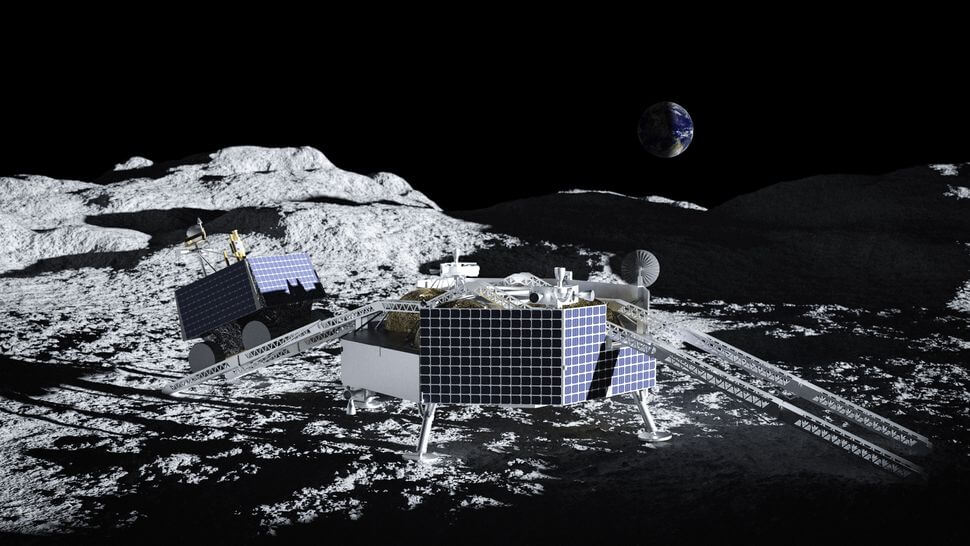Astrobotic’s Peregrine Lander successfully launched from Cape Canaveral, Florida, atop a United Launch Alliance Vulcan Centaur rocket on Monday (Dec. 8), setting the stage for a new era of private space exploration.
Peregrine was originally due to reach the moon on Feb. 23 and become the first private company to conduct a soft landing on the moon, but the lander experienced a propulsion anomaly just hours into its mission that involved a “critical loss of propellant.” Astrobotic is now looking into alternative scenarios to salvage what science it can from the mission.
But Peregrine is only the first of many planned private moon missions. Despite the fact that the mission did not pan out as planned, a number of other private lunar missions are set to follow hot on its heels. Thanks to NASA’s Commercial Lunar Payload Services Program (CLPS) and other private initiatives, multiple missions to the lunar surface are scheduled through 2026. And that’s just in the United States alone.
Related: 10 exhilarating spaceflight missions to watch in 2024
Future NASA Commercial Lunar Payload Services initiative missions
There are several other CLPS initiative commercial missions set to launch during 2024, many of which will also head for the lunar south pole.
The Volatiles Investigating Polar Exploration Rocver (VIPER) is the second scheduled CLPS Astrobotic mission set for this year. This golf cart-sized roving robot will search for water and other compounds in lunar soils over the course of 100 Earth days.
The robot will be equipped with a drill to dig up soil cuttings from as deep as 3.28 feet (1 meter) below the lunar surface. These drill samples will be analyzed within the robot, allowing operators to determine the composition and concentration of potential resources, including water and other ices.

Another space exploration company that will be making the most of CLPS this year is Intuitive Machines, which is based in Houston, Texas.
The company will place its Nova-C lander near a crater at the lunar south pole as part of a mission designated Intuitive Machines 1 (TO2-IM) no earlier than Feb. 2024.
The mission will be carried to space atop a SpaceX Falcon 9 rocket and will aim to investigate what happens when high-energy particles from the sun strike the lunar surface and the effect of space weather on the moon.
Another Intuitive Machines mission set to venture to the moon in 2024 is the Polar Resources Ice Mining Experiment 1 (PRIME-1).
The aim of this robot is also to hunt for water at the lunar south pole, which PRIME-1 will do with two elements: the Regolith and Ice Drill for Exploring New Terrain (TRIDENT) and the Mass Spectrometer for Observing Lunar Operations (MSolo). TRIDENT will gather samples and pass them to MSolo for analysis.
A third CLPS mission for Intuitive Machines in 2024 will see payloads delivered to the near side of the moon. The mission, provisionally known as IM-3, will investigate a strange feature of the moon officially known as Reiner Gamma, which appears as a bright swirl in the dark expanse of the Oceanus Procellarum mare.
The hope is to determine if this swirl is the result of crustal magnetism. It will also feature secondary payloads, including a rover and a data relay satellite.
Another company set to capitalize on the CLPS program at some point in 2024 is Firefly Aerospace, also based in Texas, which will send the Blue Ghost lander to Mare Crisium, a large basaltic plain on the moon created by early volcanic eruptions.
The Blue Ghost Mission 1 (TO 19D) will carry a whopping ten payloads to the moon on the box-shaped two-deck lander. Blue Ghost will measure heat flow from the lunar interior to the surface of the moon. In addition to this, it will use its vantage point on the moon to turn its attention to Earth’s magnetosphere.
This flurry of commercial space activity will continue into 2025 when another company, Draper, is set to send its SERIES-2 lander to a region of the far side of the moon called Schrödinger Basin.
In 2026, Firefly will send its second lot of payloads to the moon as part of the CLPS program. During this launch, the company will also be shooting for a landing on the far side of the moon.
The operators of these two missions are no doubt buoyed by the fact that in August 2023, India became the first country to successfully land a craft, the Chandrayaan-3 lander, in this hard-to-access area of the moon.
Russia attempted the same feat the same month, but that mission ended in failure when the lander crashed into the lunar surface due to a sensor anomaly. Far from the lunar south pole region, A private Japanese mission met a similar fate in April 2023 when ispace’s Hakuto-R lander crashed onto the moon.